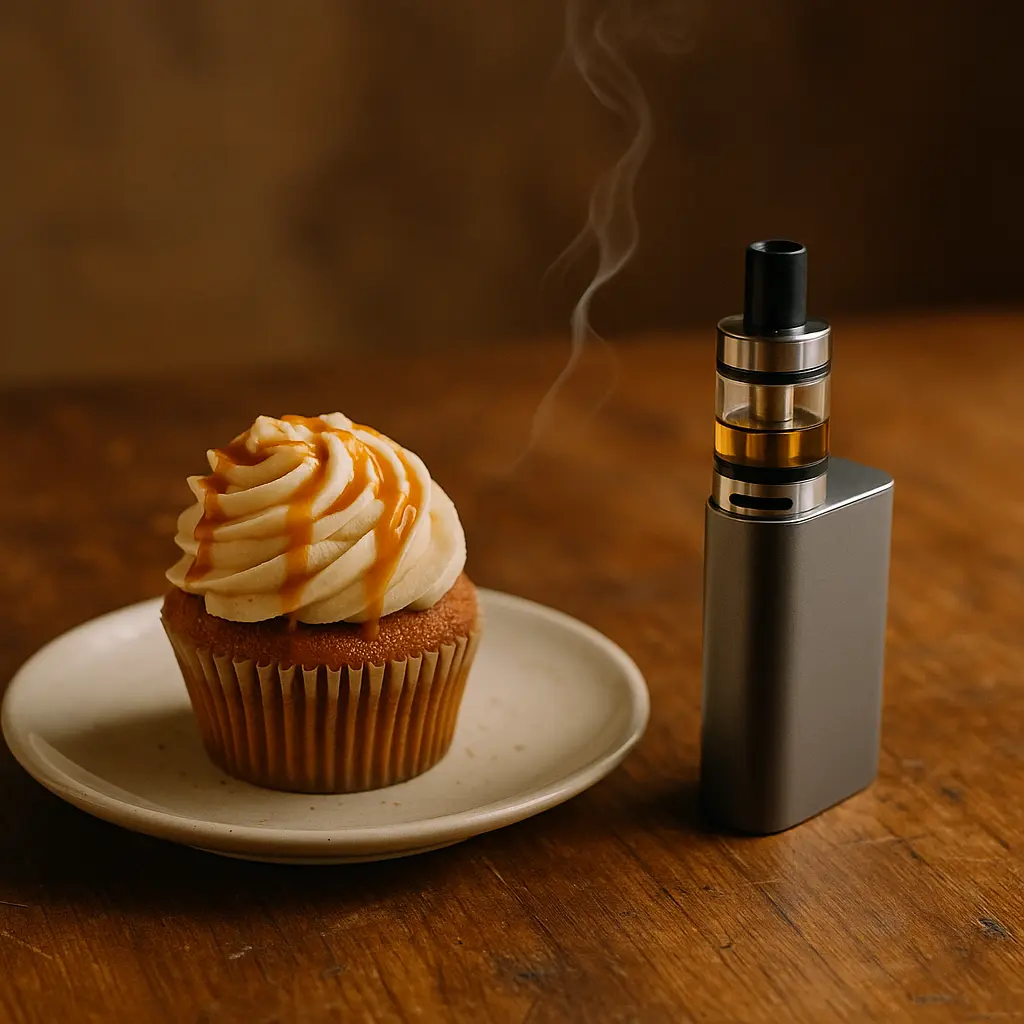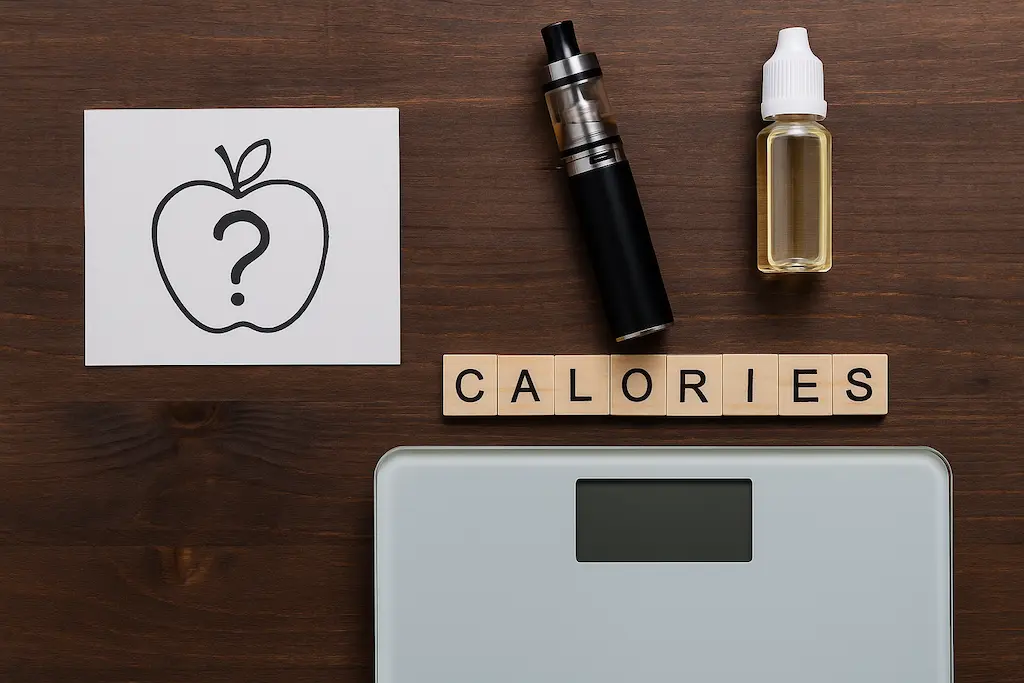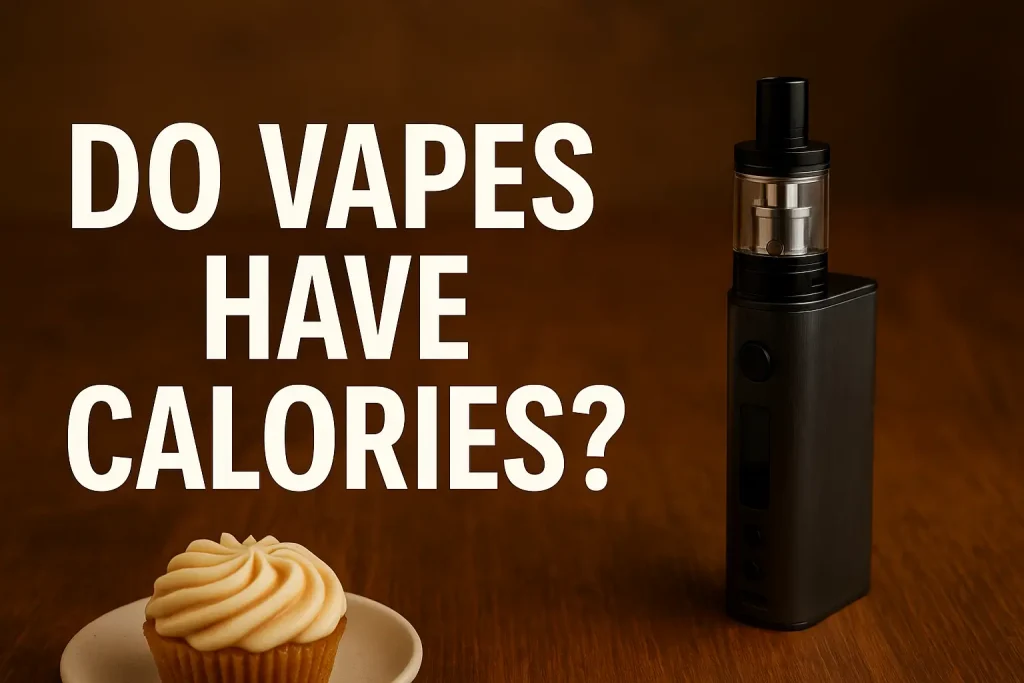Introduction
Have you ever asked yourself, “Do vapes have calories?” or “How many calories are in a vape?” You’re not alone.
Many people switching from smoking to vaping wonder if they’re still taking in calories through vapor.
Let’s break down the truth — what’s actually inside your vape, how many calories there really are, and whether vaping affects your body or diet at all.
Why Do People Think Vapes Have Calories?
People often ask, “Are there calories in vapes?” because vape juice ingredients — vegetable glycerin (VG), propylene glycol (PG), and flavorings — are also used in food.
In nutrition, VG contains about 4 calories per gram, so it seems logical to assume that vaping might add calories.
However, when these ingredients are heated, they turn into vapor, not food, and your body doesn’t digest vapor.
In short, people associate vaping with calories simply because e-liquids share ingredients with edible products, but vaporization ≠ digestion.
According to Healthline’s review on nicotine and calories, nicotine itself has no caloric value, and the vapor you inhale doesn’t add measurable energy to your body.

How Many Calories Are in a Vape?
Now that we understand why people think vapes have calories, let’s look at the actual numbers.
If you’ve ever wondered “how many calories are in a vape” or “how many calories in a vape hit”, here’s the truth:
Based on basic nutritional data and Healthline:
- VG and PG combined in a 2ml disposable vape add up to roughly 8–10 calories total.
- When vaporized, nearly all of it is exhaled as vapor, leaving less than 1 absorbed calorie.
- Even heavy users inhaling large 30ml bottles only expose themselves to trace caloric vapor, not real food energy.
Bottom line:
Vaping might contain calories on paper, but your body doesn’t consume them, so vaping adds virtually zero calories.
Does Vaping Have Calories or Affect Weight?
So, does vaping have calories that can make you gain weight?
Not really — vaping doesn’t provide usable energy to your body.
However, nicotine can slightly affect how your body processes food and metabolism.
Here’s how:
- Nicotine suppresses appetite. It’s one reason smokers often feel less hungry — supported by studies from the National Institutes of Health (NIH).
- It may increase metabolism. Your body burns slightly more calories for a few hours after vaping.
- No nutritional value. Vaping doesn’t provide carbs, fats, or protein — it doesn’t act like food.
That means some people might even lose a little weight when switching from smoking, but that’s due to nicotine, not the vape juice itself.

Do Different Vape Types Have Different Calories?
Some users ask if disposable vapes, refillable vapes, or vape juice bottles have different calorie levels.
Here’s the truth:
| Type | Calorie Estimate | Reason |
|---|---|---|
| Disposable Vape (2ml) | ~8–10 total | Very small VG content |
| Large Disposable (20ml–30ml) | 50–70 total | Still inhaled, not eaten |
| Vape Juice Bottle (30ml) | 120–150 | Only matters if swallowed |
So whether you use a disposable vape, pod system, or vape juice bottle, calories in vape only matter if you drink it, not when you inhale it.
If you want to learn more about these ingredients, see the Wikipedia entry on Propylene Glycol, which explains its safe use in both food and e-liquids.
How to Vape Without Worrying About Calories
You don’t need to track “vape calories,” but here are a few tips for healthy vaping habits:
- Avoid overthinking the numbers. You’re not consuming food — it’s vapor.
- Stay hydrated. VG and PG can dry your throat; drink more water when vaping often.
- Watch your nicotine strength. Higher nicotine may suppress appetite too much.
- Choose quality brands. Poor-quality vapes may burn or degrade faster, but not because of calories.
- Keep your device clean. A clean coil and good airflow prevent burnt hits, not calorie gain.
When to Replace Your Disposable Vape
Even though calories aren’t a concern, flavor and performance change over time. Replace your vape if:
- The flavor becomes burnt or weak
- The LED blinks or the battery stops
- You reach the puff limit (e.g., 600, 10000, 20000 puffs)
- The vapor feels harsh even after resting the device
Once e-liquid is gone, there’s nothing left to “burn” — so it’s time for a new one.
FAQs About Vapes and Calories
Q1: Are there calories in vapes with no nicotine?
A: Slightly — from the VG, but you don’t absorb them when vaping.
Q2: Can vaping make you gain weight?
A: No direct link. If anything, nicotine can reduce appetite slightly.
Q3: How many calories are in nicotine itself?
A: Nicotine doesn’t contain calories — it’s a stimulant, not a nutrient.
Q4: Does vaping break a fast (intermittent fasting)?
A: No. The calorie content is too low to break a fast, less than 1 calorie per session.
Q5: What about flavored vapes?
A: Even “sweet” flavors like blueberry or mango get their taste from food-grade flavoring, not sugar — so no added calories.
You Can Read More
How Long to Charge Disposable Vape: A Complete Guide
How to make a disposable vape not taste burnt
Does Vape Juice Expire? How Long It Lasts & Tips to Avoid Expired Juice
